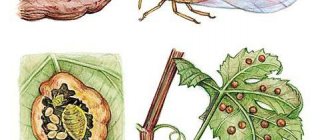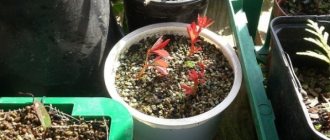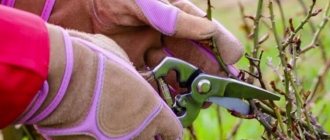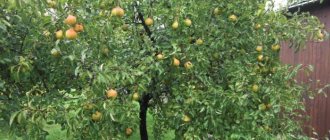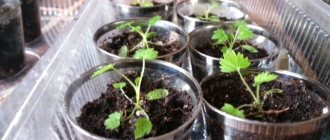Cuttings have long been considered the only and most effective way to propagate ornamental roses. Today, more and more gardeners prefer to experiment and prefer planting seeds. This is a long and labor-intensive process, but as a result the plant has increased resistance, immunity and an attractive appearance.
If you follow planting technology and proper care, you can grow a rose from seeds even at home. From the article you will learn all the intricacies of this method of reproduction.
Benefits of growing roses from seeds
Growing roses from seeds is a complex process that takes a lot of time and effort. It is possible to achieve flowering of the plant only after several years from the moment of planting. Despite this, this method has undeniable advantages:
- unlike cuttings, you can get several plants, which is especially important when landscaping the area, creating a flower bed or hedge on the site;
- roses grown from seeds are more resistant to disease and are stronger and more resilient plants;
- using seed propagation you can get a potted rose that can be grown indoors;
- the cost of seeds is significantly lower than rose cuttings, which makes it possible to save money when planting a large volume.
Planting material is difficult to find on sale, so flower growers often order seeds from China. However, the so-called Gift roses ordered from China do not always germinate, and the result of growing can be completely unpredictable.
You can also get the seeds yourself by collecting them after the adult plant has flowered, but they have low germination capacity and quickly deteriorate.
Why do people order rose seeds from Chinese websites?
Websites selling seeds from China offer a huge range. In the catalog you can find not only roses in our usual colors, but also blue, purple, beige, black, brown and even light green. Many people cannot resist such variety and want to buy a lot of seeds at once.
It is difficult to judge how truthfully sellers describe their goods. Reviews are often contradictory. Many people note that there simply are no such colorful roses, and the seed sent either does not germinate or has nothing to do with exotic flowers. Others write that they received high-quality seeds from which the promised plants grew. Be that as it may, parcels with such contents almost always arrive. Even if the package contains not a blue rose, but an ordinary one, do not be upset. The main thing is that it grows and pleases you with its beauty and sweet aroma.
Another reason why people buy seeds from Chinese sites is that they are cheap. They cost just a penny, and in some cases they are also delivered for free. For little money you can buy seeds of a large number of plants here. Even if not everyone ascends, the losses will not be so noticeable. Even domestic seeds do not germinate one hundred percent.
When to sow seeds for seedlings
The timing of planting rose seeds depends on the climatic conditions in the growing region, as well as the type of plant itself. Choosing a period depending on the variety:
- Chinese roses are usually planted starting in early February. Usually they are highly resistant to unfavorable conditions, so seedlings can be replanted in early spring;
- It is recommended to sow polyanthus rose seeds from January, due to the slow rate of seedling development and the need for stratification;
- wrinkled and brown roses are usually planted as seedlings in the second half of autumn, followed by transplantation into open ground only in the spring.
In cold regions, you need to time planting to avoid frost during transplantation to a permanent location. To do this, the deadline is shifted by 1-2 weeks. If you plan to grow roses indoors, planting at any time of the year is acceptable.
Transplantation into open soil
In April - May, when warm weather sets in, the grown rose bushes can be transplanted into open ground. Autumn transplanting risks the fact that the plant may not survive the winter and will die. But before you send the rose for permanent residence in the garden, you need to gradually harden off the seedlings over the course of 2-3 weeks
Before transplanting a grown rose into open ground, you should cut off the first blooming buds. Because of them, the young plant will weaken after transplantation and may not take root in the open air, since the vital forces will not be spent on strengthening the root system.
A moderately sunny place, protected from the effects of sharp gusts of wind, is optimal for transplanting roses. The most suitable composition is light and loose sandy-clayey soil. If the soil on the site does not meet the necessary requirements, it needs to be dug up with peat, sand or chalk.
During the growing season, it is necessary to add mineral fertilizer to the soil. Thanks to additional feeding, the rose bushes will develop better and easily withstand the winter cold.
Soil for sowing seeds
The substrate for germinating rose seeds should be light and fertile. It is best to use store-bought compositions intended for roses, but you can prepare the soil yourself. For this purpose, you need to mix garden soil, peat and sand in a ratio of 2:1:2.
The presence of drainage is a mandatory requirement, so you need to prepare expanded clay or pebbles in advance for subsequent placement on the bottom of the pot. If you use self-prepared soil, it must be disinfected before planting, for example, by calcining it or treating it with a 5% solution of potassium permanganate.
How to prepare seeds before planting
Stratification is a mandatory step in growing roses from seeds. For this purpose, planting material is carefully sorted and all damaged and deformed specimens are removed. After this, the seeds need to be treated with a 10% solution of hydrogen peroxide or a 5% solution of potassium permanganate. When working with purchased polyanthus or Chinese roses, there is no need to trawl the seeds, since this has already been done by the manufacturer.
Then the seeds are laid out on a cotton pad soaked in hydrogen peroxide and covered with another one on top. They are placed in plastic bags, on which it is convenient to attach a sticker with the name of the variety, and then put in the refrigerator. In such conditions, the seeds should be kept for 1.5-2 months at a temperature of +2-5°C. During this time, you need to regularly check the substrate for mold and moisten it as necessary. After the sprouts appear, the planting material is ready for sowing.
What you need to grow a rose seedling
In order to grow a rose at home you will need:
- seeds;
- general container and individual pots for seedlings or peat tablets;
- hydrogen peroxide;
- cotton pads;
- purchased or prepared substrate;
- expanded clay, pebbles or coarse river sand.
The agricultural technology for growing roses from seeds is practically no different from other plants, so a standard set of equipment and items is usually required.
Sowing seeds
After preparing the soil and the first sprouts appearing on the seeds, the rose can be planted in containers. Planting material is sown only superficially, without deepening it into the ground, but in order to avoid the appearance of a black leg on top, it is recommended to cover them with a thin layer of fine sand or perlite. After this, the soil is moistened with a spray bottle and the container is covered with film or glass.
Growing conditions
To achieve healthy and strong seedlings, it is very important to create favorable conditions for their development. This can be easily done at home, it is only important to follow simple rules.
Lighting and location
A box of seedlings or peat pots is best placed on the eastern or western windowsill of an apartment, where it is easiest to achieve long-term, diffused sunlight. When exposed to direct sunlight, especially at midday, the seedlings must be shaded.
Temperature
The optimal temperature for seedling formation is 18-21°C. This is easy to create in an apartment, so additional heating is usually not required. Sudden changes in temperature should not be allowed, and it is also not recommended to keep seedlings in colder conditions.
Air and humidity
During the entire period of seedling growth, it should be regularly sprayed, avoiding waterlogging of the soil. Roses react acutely to drafts, so drafts should not be allowed to appear during the entire period of development of young plants. During the active heating season, it is especially important to maintain air humidity, since radiators lead to the formation of a dry microclimate in the room.
Watering
Throughout the entire period of seedling development, it is necessary to check the soil moisture. Avoid overmoistening and drying out, as well as the formation of a dry crust on the surface. In order not to harm the fragile root system of young roses, it is recommended to use only a spray bottle. When kept in a dry room, you can additionally water the seedlings, carefully introducing warm water between the plants.
Possible problems and solutions
- The most important problem is the long process of seed germination. Not all gardeners have the patience and perseverance to wait for the shoots to appear, and then for the tender shoots to gradually turn into a young plant.
- Chinese seeds may contain weeds. You need to notice in time where the roses have grown and where the weeds are. All weeds must be removed so that they do not take away the strength of the rose seedlings.
- Not all Chinese varieties of roses can survive in our climate. There are often cases when seeds germinate, but the seedlings die before or after planting in the ground. Also, young plants may not survive the winter, despite good shelter. The more unusual and exotic the rose variety, the more whimsical it is and is unlikely to be able to adapt to our climate.
If this happens, don’t be upset; try purchasing seeds of simpler varieties of roses. You also need to purchase as many seeds as possible, especially since they are inexpensive. From a large number, shoots will probably emerge, and some of them will certainly survive and develop into an adult bush.
Caring for rose seedlings
After emergence of seedlings, the planting of seedlings can be thinned out by removing all weak and deformed plants. After this, you need to follow simple care rules in order to get healthy seedlings ready for planting in open ground.
Temperature
After the formation of several leaves on the seedlings, the air temperature can be slightly reduced to 15-18°C. This is enough to maintain the health of the seedlings and for their development. You cannot store a container with seedlings on the balcony, since there is a risk of sudden temperature changes, especially at night, to which young plants always react sharply.
Backlight
For the harmonious growth of roses from seeds, daylight must be at least 10 hours. In early spring, this is usually not a problem in most regions, but when daylight hours decrease, additional lighting must be used. For this purpose, a phytolamp or a regular fluorescent lamp is best suited. The lamp should not be lowered low to the seedlings to avoid burns to the leaves.
Watering seedlings
Roses should be watered in such a way that the soil is constantly moist, but not too soggy. The substrate should not be allowed to dry out, which can lead to diseases of the root system. The optimal watering regime is 2 times a week when growing seedlings indoors. If necessary, for example, in case of wilting of leaves, you need to additionally spray the plants.
Feeding seedlings
During the growing period of seedlings, fertilizing is carried out twice. For this purpose, it is best to use liquid fertilizers for roses, which contain all the necessary beneficial elements and minerals. The first time the composition is applied after the first leaves appear, and then 2 weeks after picking. It is not recommended to use only nitrogen formulations, as this leads to rapid growth of the green parts, rather than the overall development of the plant.
Picking
When using peat pots, there is no need to pick. If you used a common container for seedlings, transplant the roses into individual containers when the plants have 3-5 strong leaves.
To do this, you need to carefully dig up the seedling and, together with a lump of earth, put it in a plastic pot filled with soil 2/3 of the volume. Then you need to add the substrate and water the plant generously. After transplantation, you should not use fertilizer for 10-12 days, allowing the rose to adapt to the new conditions.
Pinching
At the stage of growing seedlings, it is necessary to remove all deformed and damaged leaves. It is best to carefully pinch them rather than cut them with a knife. In addition, all seedlings affected by blackleg and other infections should be removed.
Diseases and pests of seedlings
The most dangerous diseases for rose seedlings are considered to be fungal infections, infection of which usually occurs when using poor-quality soil, non-compliance with temperature conditions and watering. Among the most common diseases, I highlight root rot and blackleg.
The infection can be determined by the characteristic blackening of the root part, which becomes viscous and loose. All affected seedlings must be removed, after which the substrate must be disinfected with a solution of potassium permanganate to avoid contamination of other roses.
The most common pest is the spider mite. Infection with it usually occurs when rose seedlings are grown in unsuitable conditions and care rules are not followed. The presence of an insect can be determined by the characteristic white-gray coating on the leaves and wilting of the green parts.
Most of the population can be destroyed mechanically, for example by washing leaves. And then you need to apply an insecticide, for example, Actellik, Aktara or Bordeaux mixture.
Transplantation to a permanent place
Planting in a permanent place is carried out only after the end of night frosts, which are destructive for young plants. In the middle zone, transplantation can be carried out from the second half of April; in the north it is recommended to wait until May. The seedlings need to be transplanted together with a lump of earth, into previously prepared individual holes.
The procedure is usually carried out on a dry and sunny day, and after picking the roses, you need to shade them and install a support to avoid damage from the wind. If you plan to grow a Chinese rose in a flowerpot or pot, then replanting can be done earlier, when keeping the plant on a balcony or loggia.
Regardless of the method of growing roses, the seedlings must be hardened before picking. After the formation of the first leaves, young plants should be regularly taken out into fresh air, gradually increasing the duration of the procedure to 4-6 hours. This allows you to strengthen the seedlings and reduce the risk of infectious diseases.
Diseases and pests of roses
Like all cultivated plants grown in the garden, roses are susceptible to diseases and pest attacks.
The causes of diseases are:
- Poor illumination of the area.
- Thickening of plantings.
- Poor ventilation of the rose garden.
- Unfavorable climatic conditions.
- Increased soil acidity.
- Soil soaking.
- Lack of nutrients.
Not only special chemicals help to get rid of diseases, but also proper care of the crop. In some cases, the bushes will need to be transplanted to a new location, especially if the plants are planted in lowlands or in an area with stagnant water.
With high humidity, roses are affected by powdery mildew, which is considered one of the most common diseases of the “queen of flowers.” Most often, young leaves and shoots, as well as buds, on which a powdery white coating forms, suffer from the disease. Plants begin to weaken and wither, leaves curl and fall off, and inflorescences die. To combat the disease, it is necessary to get rid of the damaged parts and treat the plant with a solution of copper sulfate or colloidal sulfur.
Black spotting develops with high humidity and lack of potassium. Dark brown spots with dark edges form on the upper side of the leaf blade. The leaves begin to turn yellow and fall off. The affected parts should be cut off and the bushes treated with Bordeaux mixture, copper-soap solution or Fundazol.
The spider mite is an insect 0.5 mm long that weaves a web around the lower part of the leaf blade. Affected leaves begin to turn yellow and fall off. To get rid of the parasite, it is necessary to remove diseased leaves and treat the bushes with insecticides three times at intervals of 5–7 days.
Green rose aphids reproduce very quickly and form dense colonies on young shoots, leaves and buds. The parasite feeds on the sap of the plant, causing the bush to weaken and wither. To combat the pest, they are treated with Actellik, Fufafon or Aktara.
Proper plant care, including regular watering, fertilizing, loosening the soil, mulching and pruning, helps keep roses healthy and blooming profusely. Compliance with all agricultural practices reduces the risk of developing diseases and pests.
Further care
The type and variety of rose determines its further care. It is important to consider that this is a moisture-loving and light-loving plant, the care of which is especially important in the first year of life. It is during this time that a powerful root system is formed, immunity and vitality are enhanced.
Watering
Water for the rose is applied only at the root to avoid moisture getting on the leaves, which can lead to the formation of spots on them. Throughout the summer, watering is carried out regularly up to 2 times a week at the rate of 10-12 liters of water per plant, if it is a dwarf rose, then up to 5 liters. To form young shoots, starting from the end of August, watering is completely stopped and resumed only in the spring at the beginning of the growing season.
Top dressing
Like other members of the Rosaceae family, the plant responds best to organic matter. That is why it is advisable to apply an aqueous solution of mullein or bird droppings twice a season - before the start of the growing season, and then during the transition to dormancy. Throughout the summer season, it is recommended to use liquid complex compositions for roses, which contain all the necessary macro- and microelements.
Loosening, mulching
The procedure is carried out in the first 2-3 years, until a natural layer of mulch from last year’s foliage is formed. Loosening should be carried out as a dry crust forms on the top layer of soil; the procedure is usually carried out 3-4 times during the summer. At the same time, it is recommended to add sawdust or peat to insulate the roots, reduce the growth rate of weeds and retain moisture on the surface.
Pinching, pinching, pruning
Shaping is an important task when caring for any type of rose. When growing these plants from seeds, during the first year, only pinch off deformed and weak leaves. And if flowering is observed, but all the buds must be removed, this will speed up the development of the plant itself and improve the quality of the flowers for the next season. Then the rose needs annual decorative and sanitary pruning, which is carried out in April.
Transfer
Roses can remain comfortably in one place for a long time without the need for replanting. Plant transfer is necessary when the growth rate has slowed down significantly and flowering is completely absent. Transplantation is carried out only in the fall, after first completely cutting off the entire bush to the base of the ground. A plant with several shoots and growth buds located on them is transferred to a new place along with a lump of earth, trying not to damage the developed root system.
Adviсe
To get a healthy and strong plant, you can use the following useful tips:
- When purchasing roses on Chinese websites, carefully study reviews, photos and descriptions of planting material. It is advisable that the bag of seeds be accompanied by instructions;
- It is not advisable to start immediately with planting polyanthus roses. First, you can practice on Chinese seeds, which are easier to care for and easier to use;
- It should be remembered that the fruits of some varieties of roses must be collected before they ripen on the bush, otherwise they will be unsuitable for subsequent rooting;
- A rose grown from seeds can also be kept at home. To do this, you need to choose dwarf varieties or use a large pot;
- plants that were planted with seeds in the fall have time to form a stronger root system, which is useful for transplanting into open ground;
- The first flowering will most likely be absent or the buds will hardly develop. To improve the condition of flowers for the next season, they need to be pinched as they form.
Growing roses from seeds is a complex and time-consuming process, but the result is a beautiful and resilient plant. It can be grown at home or planted in your garden. Some Chinese roses have unusual petal colors that will become a real decoration for your garden.
Advantages and disadvantages of the method
Planting roses with seeds has its pros and cons.
| Advantages | Flaws |
| Availability. If you need to obtain a large number of seedlings, growing seedlings from seeds is advantageous in terms of savings. | Rose seeds are difficult to germinate, so the process of working with them is long and quite troublesome. |
| Seedlings produce rooted plants that can recover after freezing. | It is impossible to predict whether the planted plant will produce what you want. |
| You can get your own varietal type of rose. | Sowing seeds is not suitable for all varieties of this plant. |
It is immediately necessary to note the difference between propagating roses by cuttings and sowing. The first method, subject to the necessary care conditions, makes it possible to obtain an almost copy of the mother plant. Whereas planting with seeds will always be an experiment: it is impossible to guess what kind of splitting of the genetic characteristics of ancestors will be in the existing seeds. Therefore, you should not set yourself up for the fact that it will turn out the same as in the picture of the packaging or expect a copy of the plant from which the fruits were obtained.
